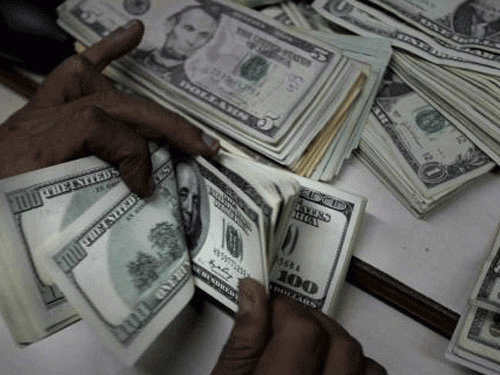By Staff Reporter
KARACHI: Pakistan’s current account surplus surged to its highest level since 2015, providing a rare bright spot for the struggling economy as it seeks a new bailout from the International Monetary Fund.
The current account surplus reached $619 million in March, its second positive reading in a row and the third largest monthly figure on record, according to central bank data released on Monday.
The surplus increased by 15 percent in March compared to the same month last year and jumped 532 percent from February’s $98 million.
The surge in remittance inflows from Pakistani citizens working abroad, particularly during the holy fasting month of Ramazan and Eid festival, drove the current account surplus.
Remittances have steadily increased since October 2023 due to regulatory measures and incentives to reroute such inflows through official channels. The narrowing exchange rate difference between the interbank and grey markets has also helped boost remittances.
“The current account surplus primarily increased due to higher remittances, despite a slight deterioration in the balance of trade and balance of services deficit and higher debt servicing,” said Awais Ashraf, an analyst at Akseer Research.
Remittances to Pakistan increased to $3 billion in March, up 31 percent from a month ago and 16 percent year-on-year. An improved trade balance also helped the current account to a sizable surplus.
The nation’s total goods exports reached $2.519 billion in March, up 4 percent year-on-year, while imports represented a 7 percent increase over the same period last year and a 2 percent increase over the previous month.
The current account surplus is a rare bright spot in an otherwise gloomy economic landscape. Pakistan’s economy has been battered by a severe balance of payments crisis, a depreciating currency, and soaring inflation, and the country is in desperate need of a new bailout from the IMF.
The Fund, however, is likely to demand tough economic reforms as a condition for an extended and longer bailout. This could include further currency devaluation, higher interest rates, and reduced government spending. The government’s ability to implement these reforms will be crucial in determining the success of the bailout and the country’s economic future.
The current account deficit narrowed by 87 percent to $508 million in the nine months (July-March) of the fiscal year 2024. The central bank has repeatedly said in recent weeks that the country’s external sector has stabilized, as evidenced by the significant decline in the current account deficit and its management of forex reserves.
The State Bank of Pakistan managed to more than double its foreign reserves from January 2023 ($3.1 billion) to $8 billion on April 12, 2024, despite the repayment of a $1 billion Eurobond earlier this month. The SBP’s forward liabilities have also drastically decreased, going from $5.7 billion in January 2023 to $3.4 billion in February.
Pakistan has been able to build up its foreign exchange reserves in recent times and is expected to reach $10 billion, or almost two months’ worth of import cover, by the end of June. The country has to repay $24 billion in external debt in the next fiscal year.
Copyright © 2021 Independent Pakistan | All rights reserved




